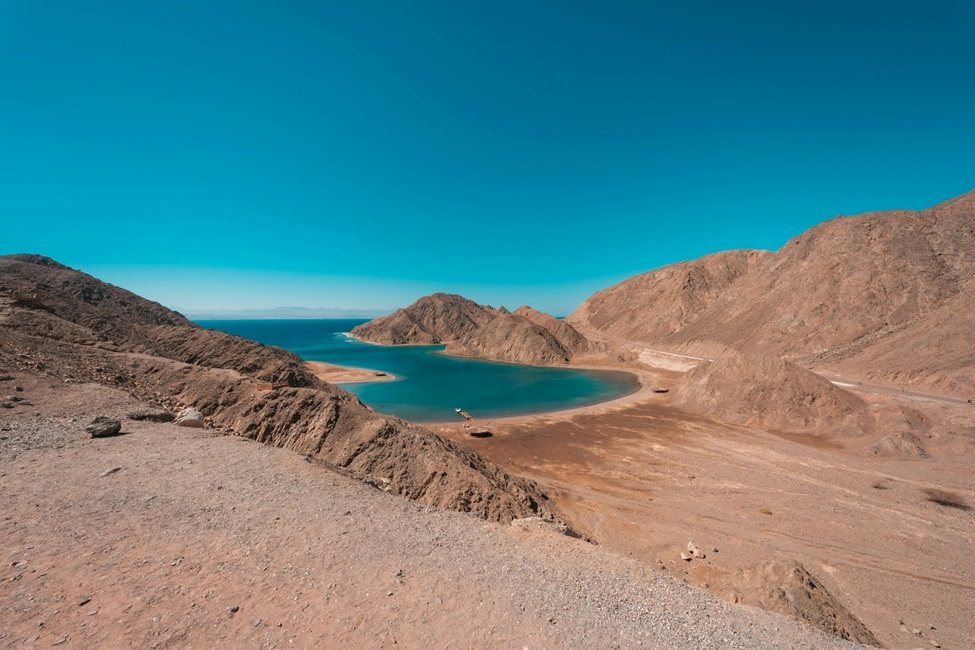When one thinks of Egypt, images of ancient pyramids, majestic temples, and bustling cities often come to mind. However, beyond the well-trodden paths of the tourist trail lies a wilderness waiting to be explored. From rugged desert landscapes to fertile oases, a guided tour of egypt ‘s wilderness offers adventurers the opportunity to embark on a journey through time, tracing the footsteps of the ancient pharaohs and uncovering hidden treasures along the way. In this article, we’ll delve into the Pharaonic trails that wind their way through Egypt’s wilderness, offering a unique perspective on this ancient land and its rich history.
The Sinai Peninsula: Following in the Footsteps of Moses
Located at the northeastern tip of Egypt, the Sinai Peninsula is a rugged and remote wilderness renowned for its biblical significance and stunning natural beauty. For millennia, travelers have ventured into the Sinai Desert in search of spiritual enlightenment and adventure, following in the footsteps of Moses and the Israelites as they journeyed from Egypt to the Promised Land.
One of the most iconic treks in the Sinai Peninsula is the climb to the summit of Mount Sinai, also known as Jebel Musa, where according to biblical tradition, Moses received the Ten Commandments. The trek to the summit is a challenging but rewarding experience, with panoramic views of the surrounding desert landscape and the Red Sea in the distance. At the summit, travelers can witness a breathtaking sunrise or sunset, reflecting on the ancient history and spiritual significance of this sacred mountain.
For those seeking a longer and more remote trek, the Sinai Trail offers a 200-kilometer journey through the heart of the peninsula, passing through Bedouin villages, ancient monasteries, and dramatic desert landscapes. Along the way, trekkers can immerse themselves in the rich cultural heritage of the Sinai Bedouin, learning about their traditional way of life and sharing in their hospitality under the star-filled desert sky.
The Western Desert: Exploring Egypt’s Ancient Oases
Stretching across the vast expanse of western Egypt, the Western Desert is a land of extremes, where towering sand dunes, rocky plateaus, and verdant oases coexist in a fragile balance. For millennia, this remote and inhospitable wilderness has been home to nomadic tribes, ancient civilizations, and intrepid travelers seeking respite from the harsh desert environment.
One of the most iconic oases in the Western Desert is the Siwa Oasis, located near the border with Libya. Surrounded by towering sand dunes and salt flats, Siwa is renowned for its natural beauty, historical significance, and unique cultural heritage. Travelers can explore the ancient ruins of the Temple of the Oracle, where Alexander the Great famously consulted the oracle of Amun, or take a dip in the crystal-clear waters of the Cleopatra Spring, said to have been frequented by the legendary queen herself.
Further south, the Bahariya Oasis offers a more off-the-beaten-path adventure, with its lush palm groves, hot springs, and ancient burial sites dating back to pharaonic times. Trekkers can explore the surrounding desert landscape on camelback or 4×4 vehicle, venturing into the Valley of the Golden Mummies to discover the tomb of the pharaohs and the secrets of Egypt’s ancient past.
The Eastern Desert: Tracing Trade Routes and Caravan Trails
Stretching along Egypt’s eastern coast, the Eastern Desert is a rugged and remote wilderness that has long played a crucial role in the country’s history and economy. For centuries, traders and travelers have crossed the desert sands along ancient caravan routes, connecting Egypt with the riches of the Red Sea and beyond.
One of the most famous caravan routes in the Eastern Desert is the Darb al-Arba’in, or Forty Days Road, which once linked the Nile Valley with the Red Sea ports of the Arabian Peninsula. Today, trekkers can follow in the footsteps of ancient traders along this historic trail, passing through barren wadis, rocky escarpments, and Bedouin encampments along the way.
For those seeking a more coastal adventure, the Red Sea Riviera offers a wealth of opportunities for snorkeling, diving, and beachcombing along some of the most pristine coral reefs in the world. Travelers can explore the underwater wonders of Ras Mohammed National Park, dive with dolphins in the waters of the Dolphin House reef, or simply relax on the golden sands of Sharm El Sheikh and Hurghada, soaking in the beauty and tranquility of Egypt’s Red Sea coast.
Egypt’s wilderness offers adventurers the opportunity to embark on a journey through time, tracing the footsteps of the ancient pharaohs and uncovering hidden treasures along the way. From the rugged peaks of Mount Sinai to the lush oases of the Western Desert, Egypt’s Pharaonic trails promise an unforgettable adventure through one of the world’s most ancient and storied lands. So pack your bags, lace up your boots, and prepare to discover the wonders of Egypt’s wilderness on a journey of a lifetime.



